Abstract
The fecal elimination and enterohepatic circulation of bile acid was studied in 11 patients. 10 patients with varying degrees of ileal disease or resection and 1 patient with pancreatic insufficiency and no ileal disease. A new technique was employed which involved the nearly simultaneous administration of cholic acid-14C and a nonabsorbable marker. 51CrCl3. Each individual stool specimen was collected for 36-96 hr and analyzed separately. Assay of the radioactivity of each isotope allowed the accurate determination of an excretion rate for both cholic acid and 51Cr. The difference between these rates was used to calculate an absorption coefficient for cholic acid. In addition, bile acid concentration measured by the steroid dehydrogenase technique, and the water content of each stool was determined.
The patients were divided into groups depending upon how much small intestine was resected or diseased: six patients with less than 100 cm of ileal resection or disease (group A), and five patients with more than 100 cm of ileal disease or resection (group B). The 51Cr excretion rate was similar in the two groups, but cholic acid-24C excretion rates were significantly more rapid in group B than in group A. The cholic acid absorption coefficient was essentially normal in the patient with pancreatic insufficiency, moderately decreased in group A patients, and extremely low or zero in group B patients. It was inversely related to the length of intestine diseased or resected.
Daily fecal bile acid excretion was normal to twice normal in group A patients and 2-8 times normal in group B patients. In all patients with ileal disease or resection, there was a direct correlation between fecal bile acid, fecal mass, and fecal water. Each millimole of additional bile acid in the stool was associated with an increase in stool water of 11 moles (P < 0.01).
These studies show that the kinetics of bile acids in the enterohepatic circulation can be accurately studied in patients with extensive ileal resection. The regular relationship between fecal bile acid and fecal mass and water suggests, but does not prove, a critical role of bile acid in determining stool water.
Full text
PDF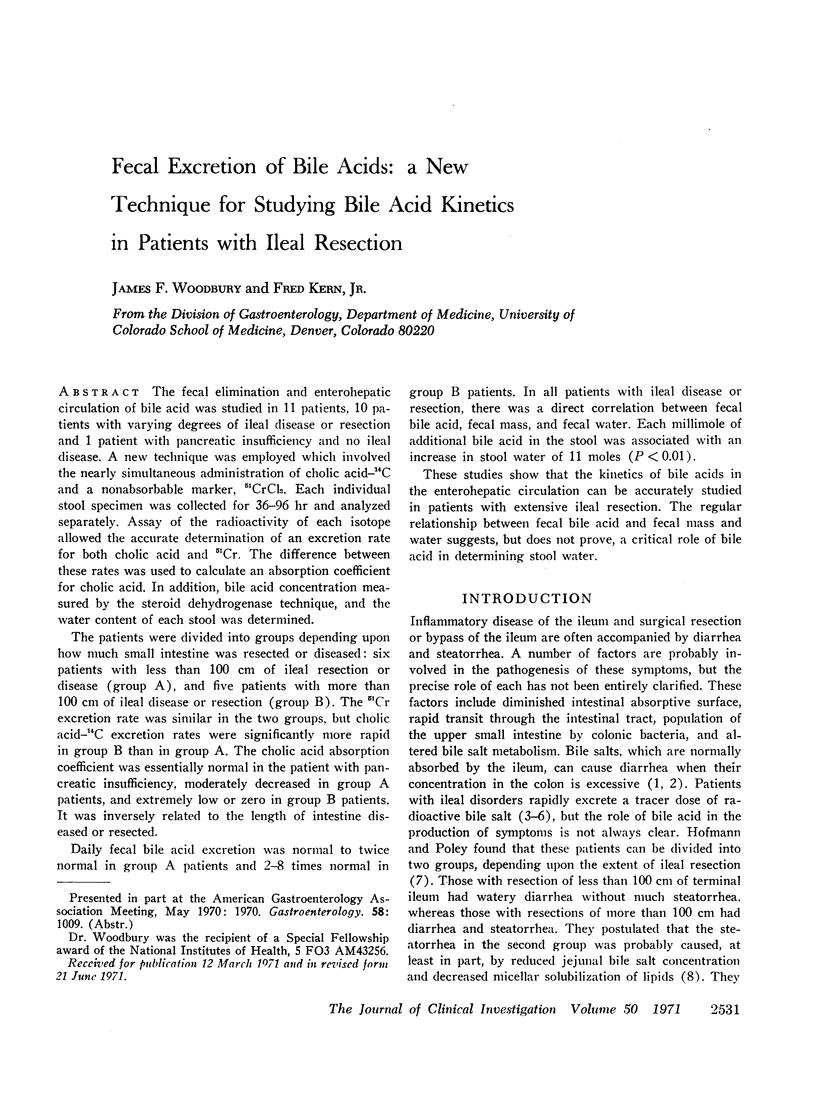
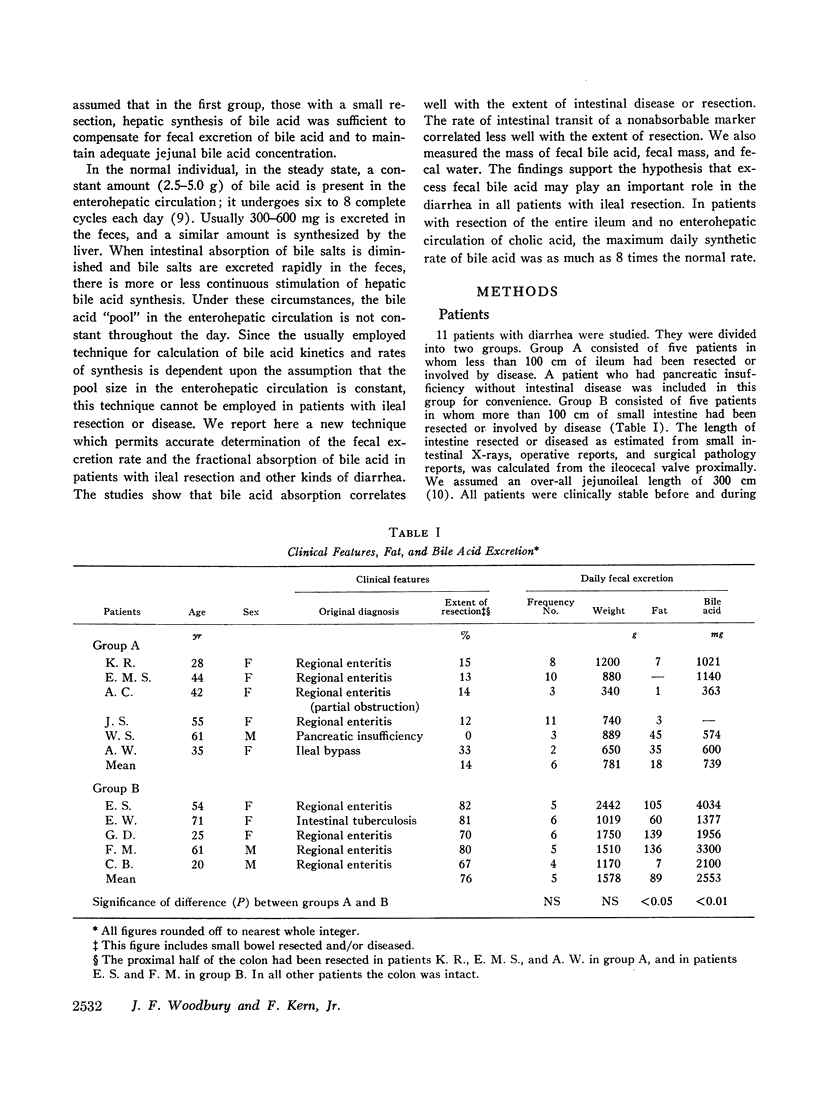
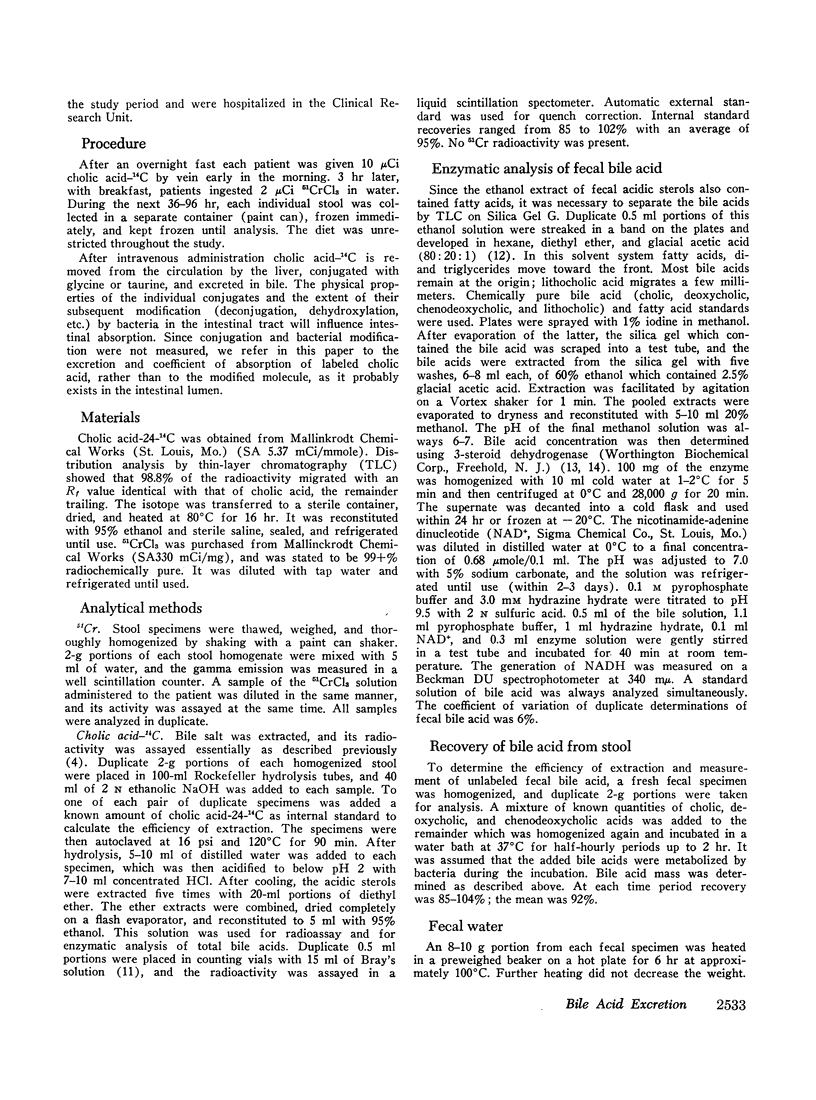
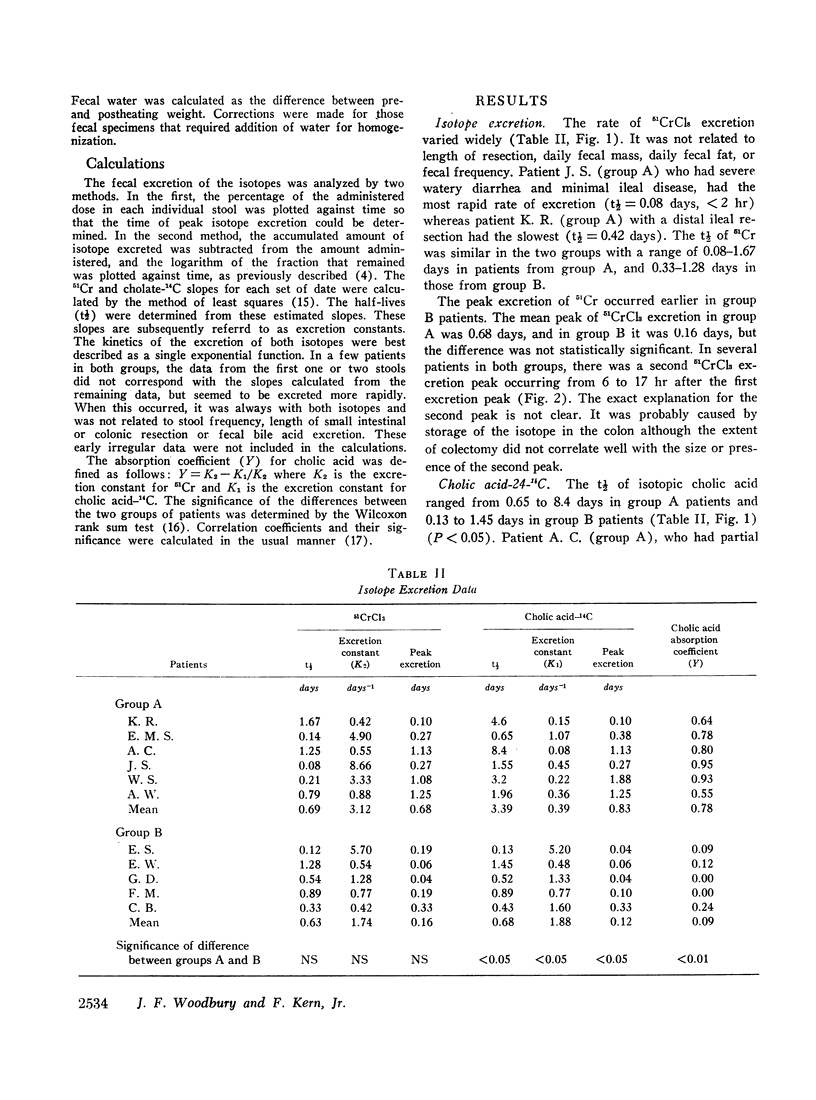
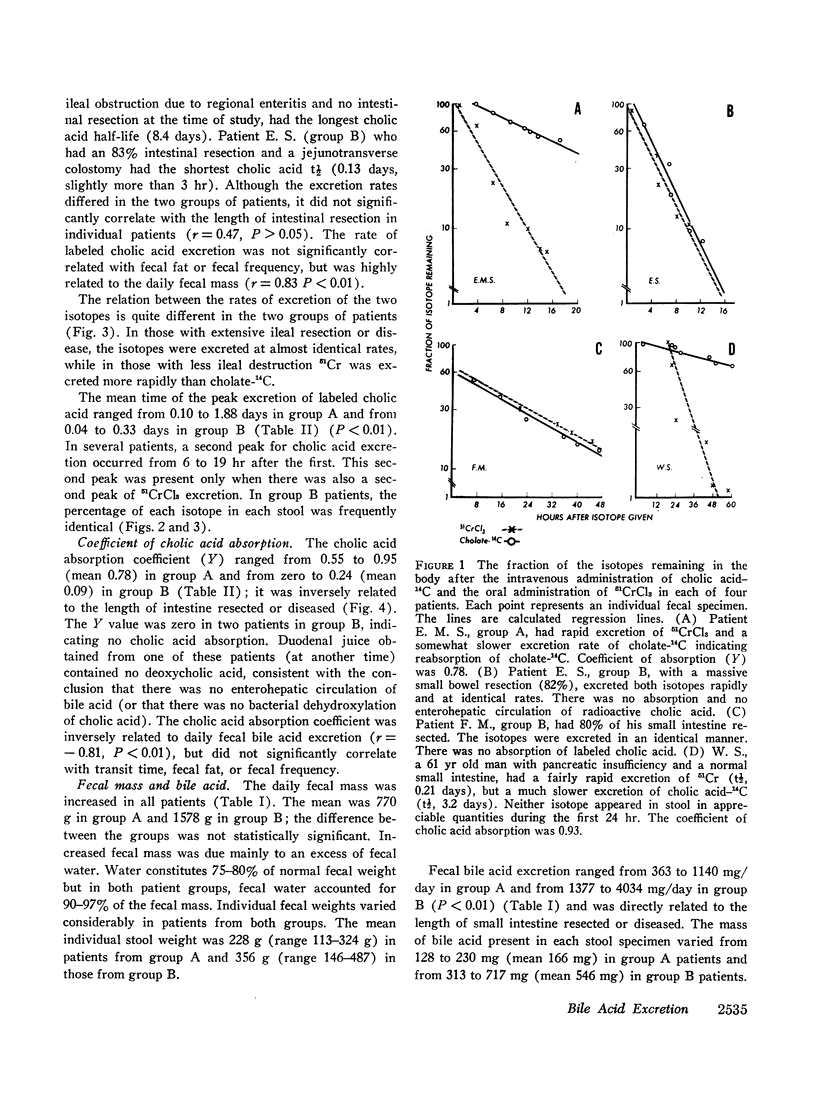
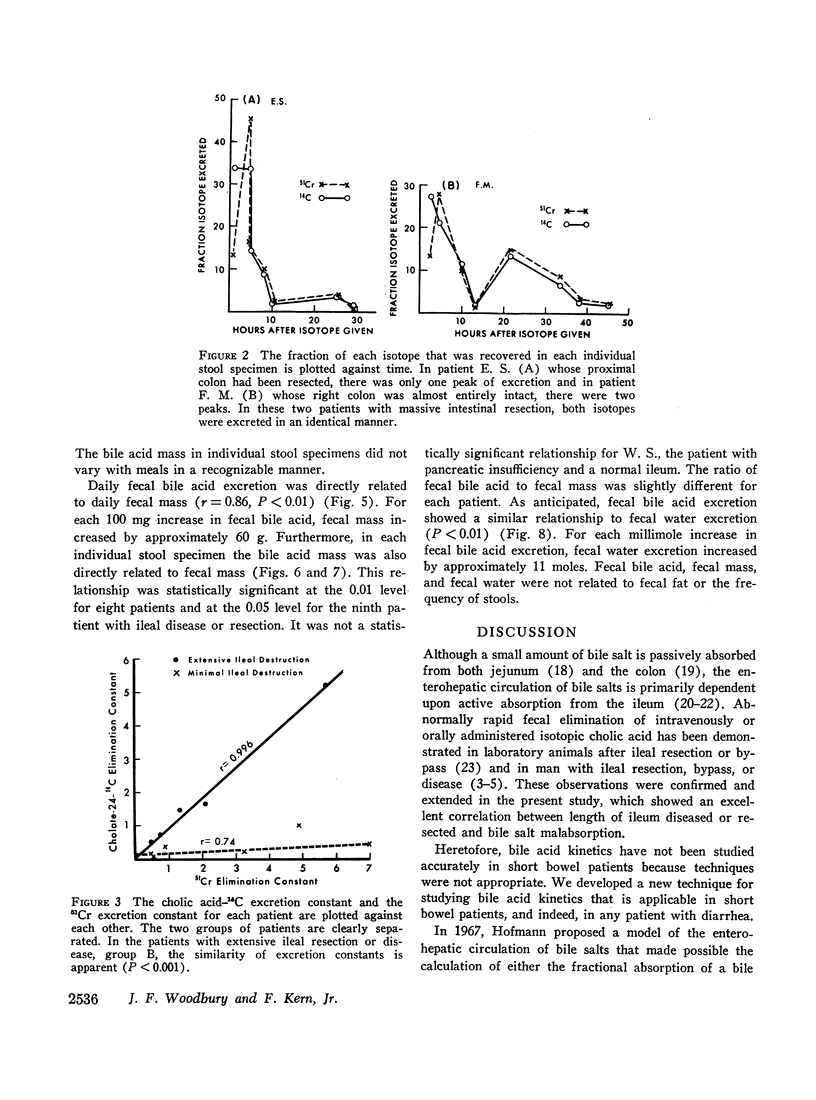
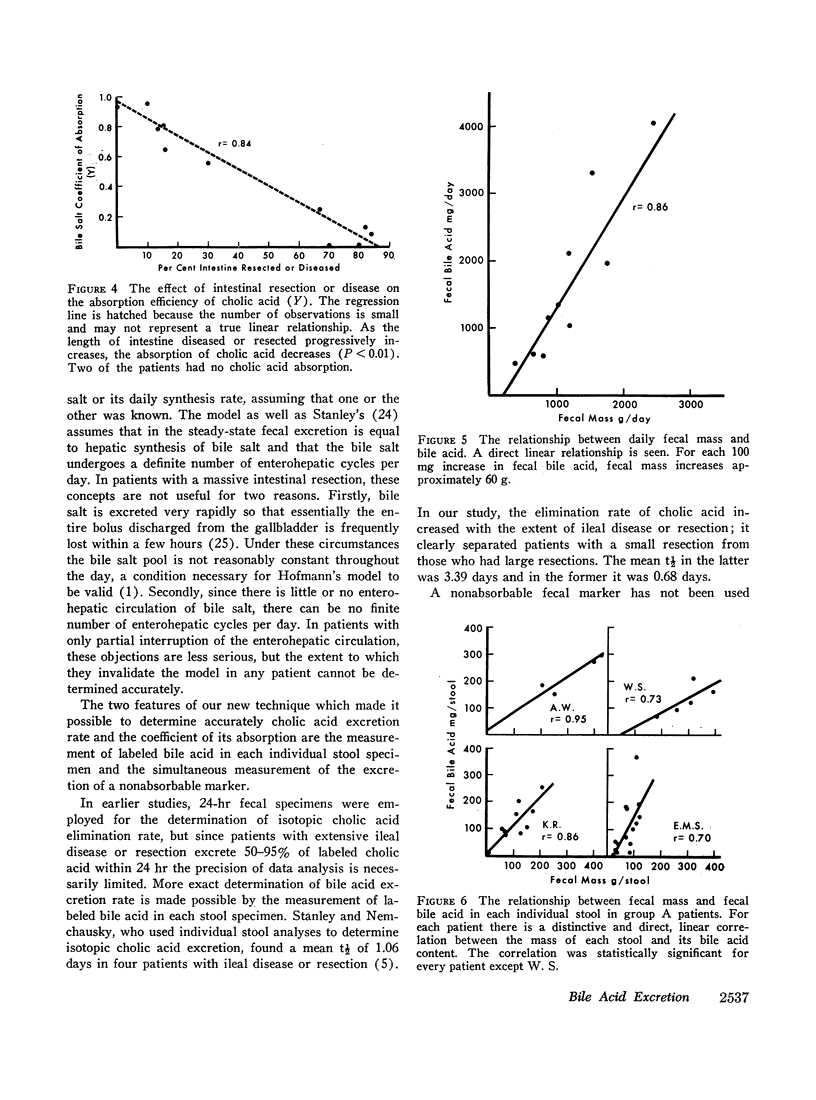
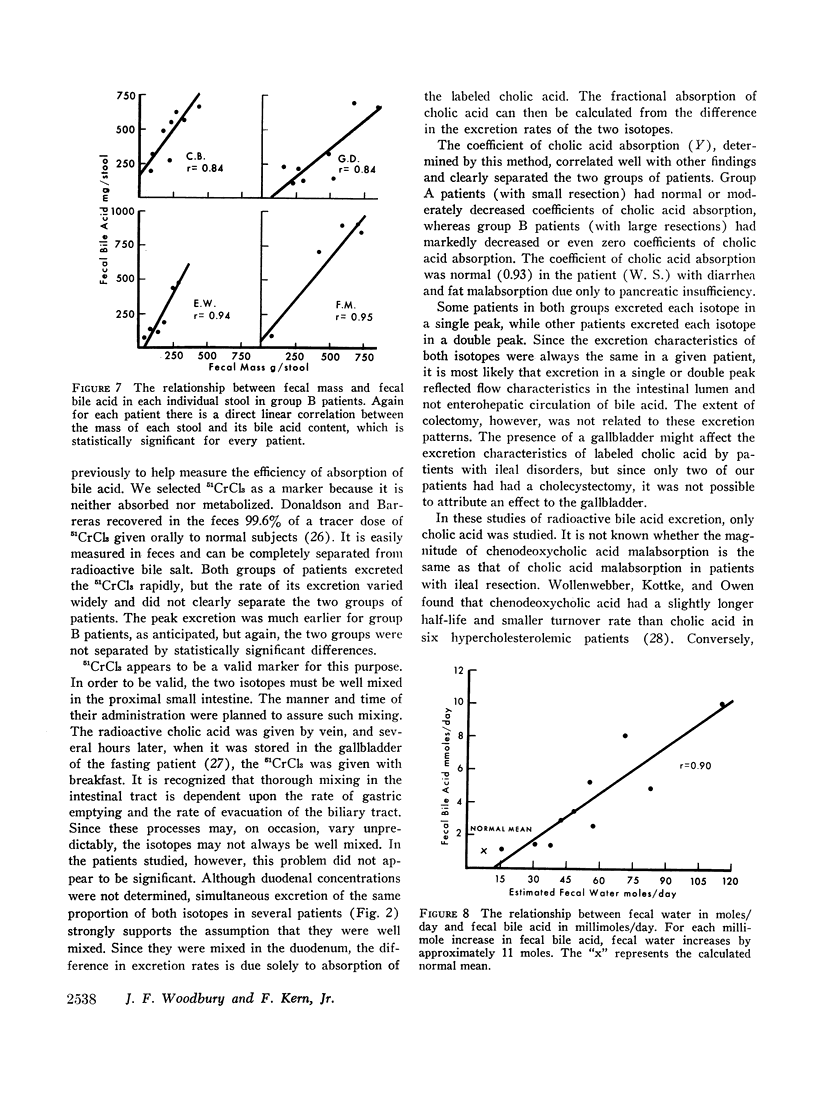
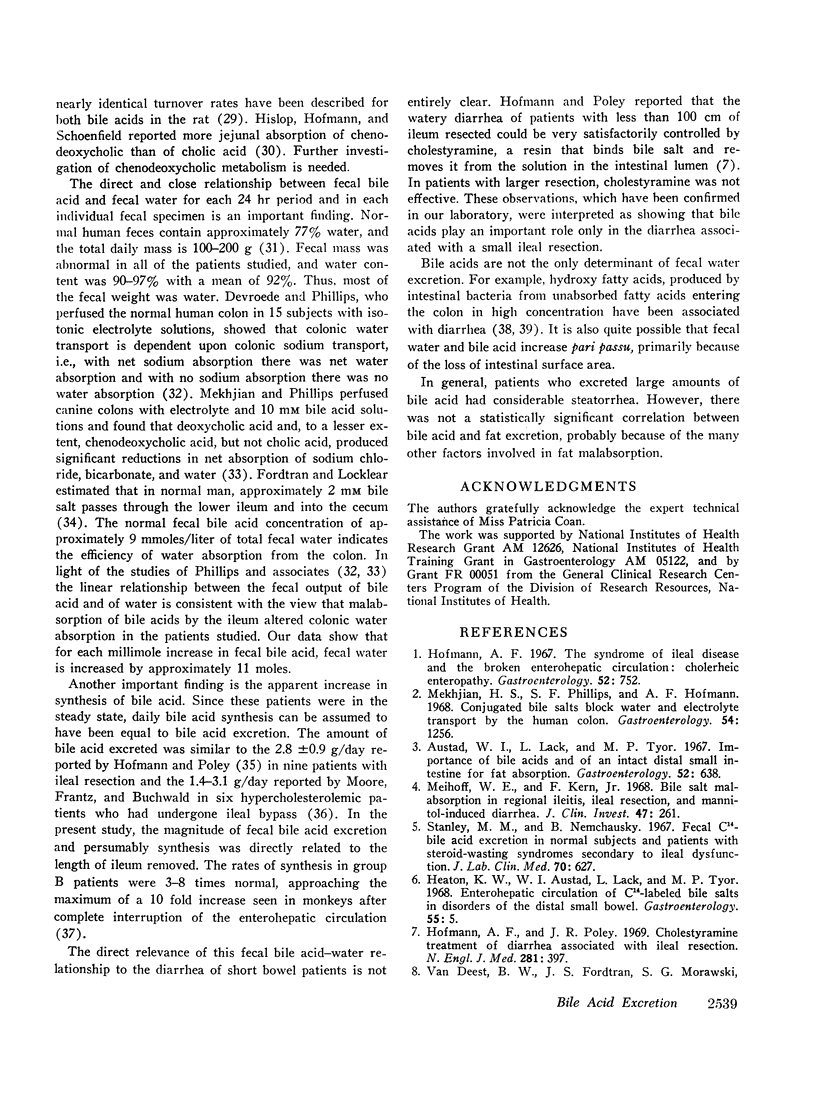
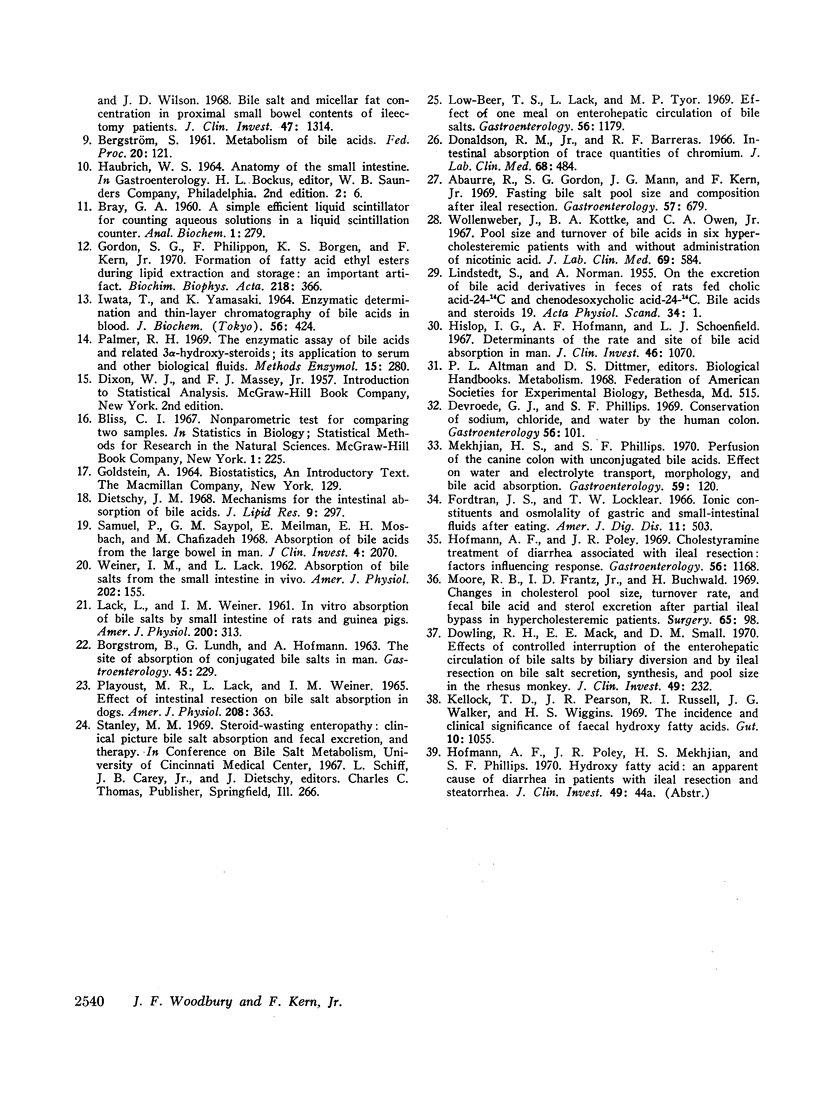
Selected References
These references are in PubMed. This may not be the complete list of references from this article.
- Abaurre R., Gordon S. G., Mann J. G., Kern F., Jr Fasting bile salt pool size and composition after ileal resection. Gastroenterology. 1969 Dec;57(6):679–688. [PubMed] [Google Scholar]
- Austad W. I., Lack L., Tyor M. P. Importance of bile acids and of an intact distal small intestine for fat absorption. Gastroenterology. 1967 Apr;52(4):638–646. [PubMed] [Google Scholar]
- BORGSTROEM B., LUNDH G., HOFMANN A. THE SITE OF ABSORPTION OF CONJUGATED BILE SALTS IN MAN. Gastroenterology. 1963 Aug;45:229–238. [PubMed] [Google Scholar]
- Devroede G. J., Phillips S. F. Conservation of sodium, chloride, and water by the human colon. Gastroenterology. 1969 Jan;56(1):101–109. [PubMed] [Google Scholar]
- Dietschy J. M. Mechanisms for the intestinal absorption of bile acids. J Lipid Res. 1968 May;9(3):297–309. [PubMed] [Google Scholar]
- Donaldson R. M., Jr, Barreras R. F. Intestinal absorption of trace quantities of chromium. J Lab Clin Med. 1966 Sep;68(3):484–493. [PubMed] [Google Scholar]
- Dowling R. H., Mack E., Small D. M. Effects of controlled interruption of the enterohepatic circulation of bile salts by biliary diversion and by ileal resection on bile salt secretion, synthesis, and pool size in the rhesus monkey. J Clin Invest. 1970 Feb;49(2):232–242. doi: 10.1172/JCI106232. [DOI] [PMC free article] [PubMed] [Google Scholar]
- Fordtran J. S., Locklear T. W. Ionic constituents and osmolality of gastric and small-intestinal fluids after eating. Am J Dig Dis. 1966 Jul;11(7):503–521. doi: 10.1007/BF02233563. [DOI] [PubMed] [Google Scholar]
- Heaton K. W., Austad W. I., Lack L., Tyor M. P. Enterohepatic circulation of C14-labeled bile salts in disorders of the distal small bowel. Gastroenterology. 1968 Jul;55(1):5–16. [PubMed] [Google Scholar]
- Hofmann A. F., Poley J. R. Cholestyramine treatment of diarrhea associated with ileal resection. N Engl J Med. 1969 Aug 21;281(8):397–402. doi: 10.1056/NEJM196908212810801. [DOI] [PubMed] [Google Scholar]
- Hofmann A. F. The syndrome of ileal disease and the broken enterohepatic circulation: cholerheic enteropathy. Gastroenterology. 1967 Apr;52(4):752–757. [PubMed] [Google Scholar]
- IWATA T., YAMASAKI K. ENZYMATIC DETERMINATION AND THIN-LAYER CHROMATOGRAPHY OF BILE ACIDS IN BLOOD. J Biochem. 1964 Nov;56:424–431. doi: 10.1093/oxfordjournals.jbchem.a128013. [DOI] [PubMed] [Google Scholar]
- Kellock T. D., Pearson J. R., Russell R. I., Walker J. G., Wiggins H. S. The incidence and clinical significance of faecal hydroxy fatty acids. Gut. 1969 Dec;10(12):1055–1055. [PubMed] [Google Scholar]
- LACK L., WEINER I. M. In vitro absorption of bile salts by small intestine of rats and guinea pigs. Am J Physiol. 1961 Feb;200:313–317. doi: 10.1152/ajplegacy.1961.200.2.313. [DOI] [PubMed] [Google Scholar]
- LINDSTEDT S., NORMAN A. On the excretion of bile acid derivatives in feces of rats fed cholic acid-2414C and chenodesoxycholic acid-2414C; bile acids and steroids 19. Acta Physiol Scand. 1955 Sep 20;34(1):1–10. doi: 10.1111/j.1748-1716.1955.tb01219.x. [DOI] [PubMed] [Google Scholar]
- Meihoff W. E., Kern F., Jr Bile salt malabsorption in regional ileitis, ileal resection and mannitol-induced diarrhea. J Clin Invest. 1968 Feb;47(2):261–267. doi: 10.1172/JCI105722. [DOI] [PMC free article] [PubMed] [Google Scholar]
- Mekhjian H. S., Phillips S. F. Perfusion of the canine colon with unconjugated bile acids. Effect on water and electrolyte transport, morphology, and bile acid absorption. Gastroenterology. 1970 Jul;59(1):120–129. [PubMed] [Google Scholar]
- Moore R. B., Frantz I. D., Jr, Buchwald H. Changes in cholesterol pool size, turnover rate, and fecal bile acid and sterol excretion after partial ileal bypass in hypercholesteremic patients. Surgery. 1969 Jan;65(1):98–108. [PubMed] [Google Scholar]
- PLAYOUST M. R., LACK L., WEINER I. M. EFFECT OF INTESTINAL RESECTION ON BILE SALT ABSORPTION IN DOGS. Am J Physiol. 1965 Feb;208:363–369. doi: 10.1152/ajplegacy.1965.208.2.363. [DOI] [PubMed] [Google Scholar]
- Samuel P., Saypoi G. M., Meilman E., Mosbach E. H., Chafizadeh M. Absorption of bile acids from the large bowel in man. J Clin Invest. 1968 Sep;47(9):2070–2078. doi: 10.1172/JCI105892. [DOI] [PMC free article] [PubMed] [Google Scholar]
- Stanley M. M., Nemchausky B. Fecal C-14-bile acid excretion in normal subjects and patients with steroid-wasting syndromes secondary to ileal dysfunction. J Lab Clin Med. 1967 Oct;70(4):627–639. [PubMed] [Google Scholar]
- Van Deest B. W., Fordtran J. S., Morawski S. G., Wilson J. D. Bile salt and micellar fat concentration in proximal small bowel contents of ileectomy patients. J Clin Invest. 1968 Jun;47(6):1314–1324. doi: 10.1172/JCI105823. [DOI] [PMC free article] [PubMed] [Google Scholar]
- WEINER I. M., LACK L. Absorption of bile salts from the small intestine in vivo. Am J Physiol. 1962 Jan;202:155–157. doi: 10.1152/ajplegacy.1962.202.1.155. [DOI] [PubMed] [Google Scholar]
- Wollenweber J., Kottke B. A., Owen C. A., Jr Pool size and turnover of bile acids in six hypercholesteremic patients with and without administration of nicotinic acid. J Lab Clin Med. 1967 Apr;69(4):584–593. [PubMed] [Google Scholar]


